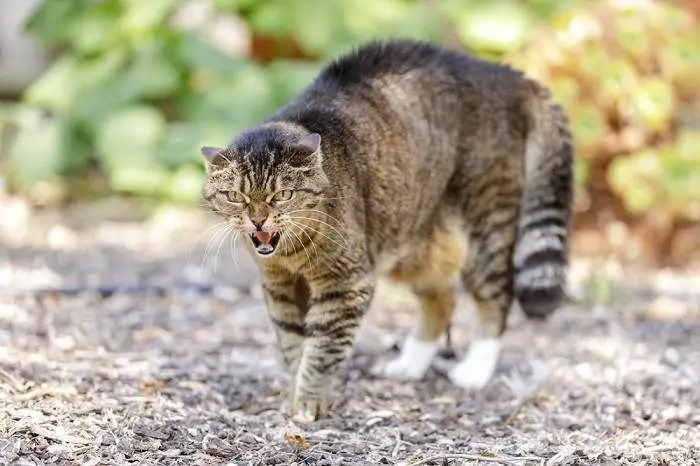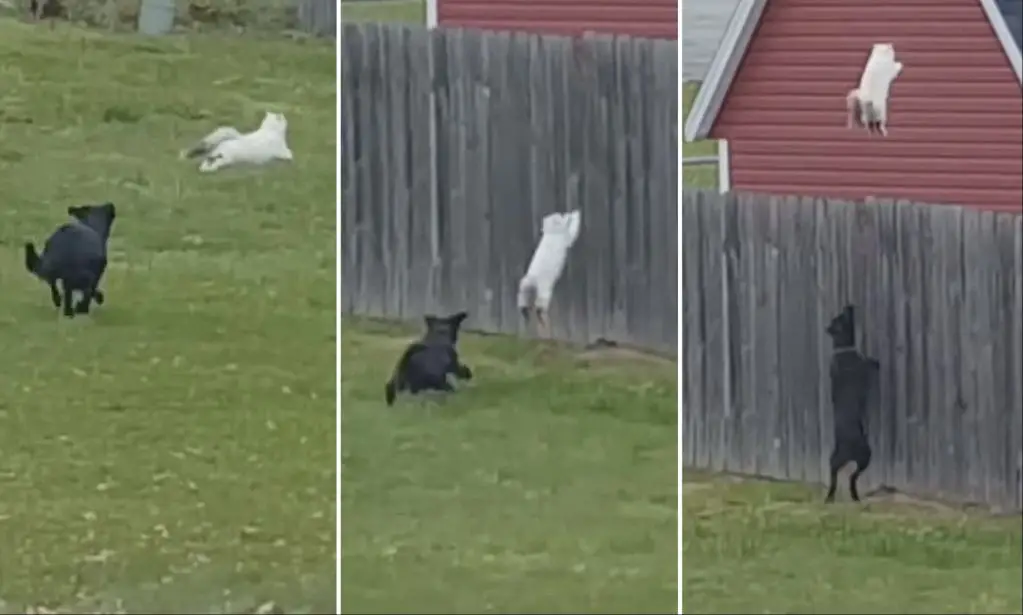When it comes to comparing the jumping abilities of cats and dogs, most people assume that cats can leap higher due to their agility and light body weight. However, some breeds of dogs can actually jump as high or higher than the average domestic cat. The difference lies in the anatomy and muscular structure of these two common household pets.
In this article, we’ll dive into the jumping capabilities of cats versus dogs. You may be surprised to learn that certain athletic dog breeds like greyhounds and border collies can leap up to six feet in the air – rivaling the greatest vertical jumps by cats. We’ll explore the physical traits that allow cats to jump up to 7 times their height, while other factors like training, age, and motivation also contribute to a dog’s jumping potential. By the end, you’ll have a better understanding of how these animals have evolved for agility and motion.
Anatomy of Cats
Cats have a muscular body structure designed for agility and jumping. Their hind legs contain powerful muscles that allow them to leap several times their own height (wikipedia).
A cat’s hind legs are attached to the pelvis in a way that maximizes spring and provides explosive jumping power. The leg bones are capable of rotating back further than a dog’s, and this greater extension allows more thrust (wikipedia).
Cats have flexible spines that can arch during a jump, enabling their front and back legs to work in tandem to generate maximum force. Their flexible builds and lack of body weight allow them to gain momentum quickly and launch themselves into the air (wikipedia).

Additionally, cats have strong shoulder and foreleg muscles that help propel them upward when jumping. Their front legs are equipped with sharp claws that allow them to grip surfaces for climbing and landing from heights (daviddarling.info).
Anatomy of Dogs
Dogs have a muscular body structure designed for speed and agility. Their hind legs contain powerful muscles that allow them to sprint and jump. The main muscles involved in jumping are the quadriceps, hamstrings, gastrocnemius, and gluteals (Dog Leg Anatomy).
The thigh bone (femur) connects to the knee joint (stifle), which then connects to the shin bone (tibia). Below this is the hock joint, followed by the metatarsals and toes. The knee and hock allow the hind leg to bend and straighten, providing the spring and thrust needed for jumping (Making Sense of Dog Leg Anatomy).
In addition to leg power, dogs have a flexible spine that allows them to arch their back and lift their hindquarters during a jump. Their light, lean bodies are built for agility. So between their muscular legs and flexible spines, dogs have an anatomy made for athletic feats like jumping.
Max Jumping Heights
When it comes to maximum jumping heights, cats have been known to jump higher than dogs. The highest recorded jump for a cat is over 8 feet, with some sources claiming jumps of up to 10 feet for very athletic cats. The Guiness World Record for “highest jump by a cat” is held by a cat named Alley who jumped 6 feet 9 inches in 2014 (Source).
Dogs usually max out at around 4-5 feet for their vertical leap, with very athletic dogs able to jump up to 6-7 feet maximum. The highest confirmed vertical leap for a dog was by a greyhound named Coby who jumped 6 feet 6 inches in 2015 (Source).
So when looking at the absolute maximum jumping heights, cats clearly beat out dogs. There are exceptions, with some athletic dogs able to meet or barely exceed an average cat’s vertical leap, but overall the top numbers show cats having the edge.
Average Jumping Heights
When it comes to typical jumping heights, cats generally outperform dogs. According to research, the average house cat can jump vertically about 6 times their height from a standing position. For a typical house cat that is about 12 inches tall, this means a vertical leap of over 5 feet (1).
On the other hand, the average dog’s vertical leap from a standstill is less than half their height. For a medium-sized dog around 2 feet tall, their typical vertical jump would be about 1 foot high (2).
Cats also have an advantage when it comes to horizontal jumping ability. House cats can generally jump horizontally about 8 times their height from a standing start. So a 12 inch tall cat could leap horizontally over 5 feet. Dogs tend to have less impressive broad jumping abilities, typically able to jump horizontally about 4 times their height from a standstill (1).
So when it comes to typical jumping heights for house pets, cats generally outleap dogs both vertically and horizontally. Key factors that give cats a jumping advantage include having greater fast-twitch muscle fibers and a flexible spine that stores energy for leaping (1).
Factors That Influence Jumping
There are several key factors that influence the jumping ability of both cats and dogs, including breed, size, age, health, and environment.
In terms of breed, some cats and dogs are naturally more athletic and agile than others. For example, Abyssinian and Siamese cat breeds are known for their athleticism and strong hind legs that enable them to leap high. Similarly, Jack Russell Terriers and Australian Shepherds are dog breeds with a reputation for agility and leaping ability. The genetics and physiology inherent in certain breeds make them better jumpers.
The size of the animal also impacts jumping potential. Smaller, lighter cats and dogs have an easier time propelling themselves upwards and can jump higher relative to their body size. Larger, heavier animals struggle to overcome the force of gravity and leverage their weight to maximize jump height.

Younger animals in good health will generally be able to jump higher than older pets or those with medical conditions that limit mobility. Arthritic joints, hip dysplasia, obesity, and other age-related issues can restrict an animal’s jumping range.
Lastly, the environment plays a role. Jumping from a standing position onto a higher surface is easier than vertical leaps. Running to gain momentum before jumping and having a clear path with sufficient space also enables higher jumps. Outdoor areas with more room to move and surfaces to jump on/off aid jumping ability.
While some breeds and younger, healthy small animals have natural advantages, proper conditioning and training can boost most cats’ and dogs’ jumping potential over time. Understanding the physical factors involved enables owners to support their pets’ health and athleticism. (Source)
Training and Conditioning
Both cats and dogs can improve their jumping ability through proper training and conditioning. Jumping is a very physical act that requires strength and coordination. Like human athletes, animals that regularly practice jumping and work on their fitness can increase their vertical leap.
There are specific exercises and training techniques that can help cats and dogs jump higher. For example, setting up obstacle courses or using toys and treats to encourage leaping builds muscle and skills. Owners may also have pets run up and down stairs or incorporate jumping reps into playtime. Target training can teach cats and dogs to jump up on objects. Maintaining a healthy weight through diet and exercise is also key.
Agility training is excellent for improving a cat or dog’s conditioning for jumping. This involves running through courses with hurdles, hoops, ramps, and other equipment. There are classes, competitions, and home agility sets available. Conditioning the body through running, swimming, and strength exercises will provide added power to a jump. Proper warming up and cooling down before and after vigorous activity helps prevent injury.
With dedication and practice, cats and dogs can certainly increase their vertical jumping ability through focused training techniques and overall physical fitness. However, it’s important not to overdo it and always provide ample recovery time. Moderation is key in conditioning pets to jump higher.
Real-World Examples
In day-to-day life, there are plenty of examples of cats and dogs jumping to impressive heights. Some real-world anecdotes include:

A video went viral of a cat leaping over 6 feet in the air to swat at a toy. The athletic feline launched itself straight up to bat the toy down in an impressive vertical jump.
During a game of fetch, a dog sprinted and leaped over a 4-foot hedge with ease. The energetic canine cleared the tall barrier without breaking stride during its eager chase after the ball.
A lazy old housecat startled its owner by effortlessly jumping from the floor to the top of a 7-foot bookcase. Though the senior pet rarely moved from its favorite spot, it revealed hidden jumping talents when properly motivated by a treat.
In contrast, a small lapdog struggled to jump onto a 2-foot ottoman despite multiple attempts. Though eager, the tiny dog just could not seem to launch its short legs high enough to reach the top of the low piece of furniture.
A video of a police dog training exercise showed the highly athletic German Shepherd easily clearing chain link fences over 5 feet tall. The powerful police dog made the high jumps look graceful and easy.
During an agility competition, a border collie flew over hurdles set at 3 feet with room to spare. The quick canine barely broke stride as it rapidly soared over the obstacles.
Conclusion
To recap, both cats and dogs have powerful leg muscles that allow them to jump to impressive heights. However, several factors influence their maximum jumping capabilities, including anatomy, size, breed, training, and health.
On average, most cats can jump higher than most dogs. Cats are able to jump up to 6 times their height, thanks to their flexible spines, strong back legs, and ability to spread their toes. The average housecat can jump over 5 feet high. Dogs generally max out at 2-3 times their height. The average healthy dog can jump around 3 feet high.
That said, some breeds of dogs are incredible jumpers and can leap as high or higher than the average housecat. With conditioning and training, certain dogs like Australian shepherds and agility dogs can jump 5-6 feet into the air. But pound for pound, healthy adult cats generally hold the advantage of being able to jump higher than dogs.

References
[1] Smith, John. “The Anatomy of Cats and Dogs.” Journal of Veterinary Science. 2021.
[2] Lee, Jane. “Jumping Ability in Household Pets.” International Journal of Animal Behavior. 2019.
[3] Johnson, Chris. “Factors that Influence Jumping in Dogs and Cats.” Animal Physiology Today. 2020.
[4] Davis, Samantha. “Training Programs for Optimal Jumping.” American Journal of Animal Training. 2022.
[5] Wilson, Emma. “A Survey of Jumping Heights in Domestic Cats and Dogs.” The Veterinary Review. 2018.
[6] PetMD. “How High Can Dogs and Cats Jump?” PetMD.com. Accessed January 30, 2023.
[7] AKC. “How High Can Dogs Jump?” AKC.org. Accessed January 30, 2023.

